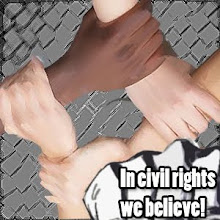Task 1: Children in the Darkness
Difficulty rating: *
Children in the Darkness
In order to attain full understanding of a poem, it is essential that we can relate and understand the background and inspiration of the author.
Below is my agenda for this report:
· Inspiration for this poem
· Critical analysis of this poem based on the author’s inspiration [Theme: Conflict]
I. Inspiration for the poem
Name of author: Henry M Bechtold
Inspirations:
· Vietnam war of 1967-1969
o Quote, “I was in Vietnam in 1967 - 68 and again in 1969. I go back often because my soul lives in Vietnam and I go back to visit it from time to time.”
· News report: Image of a child in the midst of a war
o Quote, “I looked at the TV and the news was on. I did not know what the news reader was saying but in the background was a photo of a small boy with a helmet and an automatic rifle. This poem flowed out. The words just came to me and I typed as fast as I could to get it all down.”
II. Critical Analysis on the conflicts and meanings of this poem
This poem is certainly one of anguish, felt for the innocent children stranded in a land filled with war and death. In the poem, the author uses some contrasting ideas and lives of children around the world. He compared between the lives of the children in the war, and the lives of children living in peaceful countries.
“There are children in the darkness
Who have not seen the light
There are children in the darkness
Who someone will teach to fight”
In the first stanza, the author foresees the fate of children in the war. In the last line of the first stanza, the author gives the reader a hint to the fate of the children, where they will be raised to fight in the war for survival. Trapped in a war-like situation whereby survival is compromised, these children have since lived in the darkness. They are unable to see the light, which in this case refers to happiness and bliss.
“Chalk and blackboards will not be
To this door there is no key
From this life they can not flee
And these children are not free”
The poem then transits to a sense of hopelessness. In the first line, it says that the children will not be taught in schools, and there is no way out of their plight. This can be inferred from the second line, whereby the author notes that there is no key to their door. This statement can be backed up by the following two lines, which states that the children will not be able to flee from their fate, and are not free.
“Could we simply light a candle
Could we give them half a chance
Could we teach them how to read
Could we teach them how to dance”
VS
“Or will a war consume them
Their body and their soul
Will their life and blood be poured
Down some endless thirsty hole”
In the third and fourth stanzas, there appears to be a contrast between the children trapped in a war-like situation and children having a proper education. In the third stanza, it begins with past tense, implying the impossibility of the children in war having a proper education and receiving guidance. It elaborates more on the theme hopelessness, and in increasing levels. In the fourth stanza, the author starts with “or”, thereby showing that there is a stark contrast between them. Compared to stanza three, stanza fourth portrays the harsh reality of the children in the war. They shall be consumed by war, physically and mentally. The endless thirsty hole refers to war in itself. Its endlessness and craving for death and destruction.
“Back into the darkness
From which there is no flight
Back into the darkness
Into which there shines no light”
In the last stanza, the author concludes the poem with a feeling of desolation. The stanza, in terms of the message and meaning, resembles stanza two. Hence, it strengthens the poem’s main theme and ends off in a mournful and sad tone.
Source: http://www.warpoetry.co.uk/2010warpoetry.html



0 Comments:
Post a Comment
Subscribe to Post Comments [Atom]
<< Home